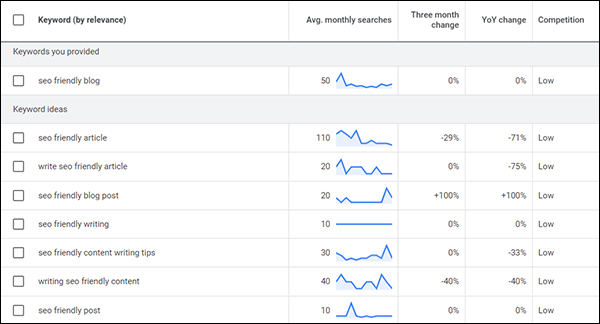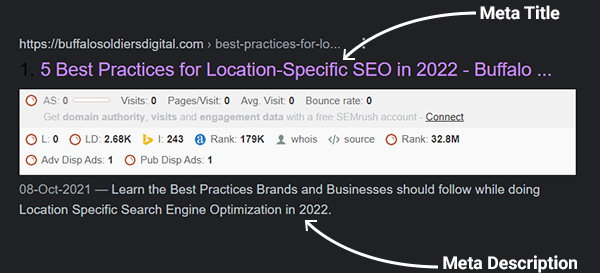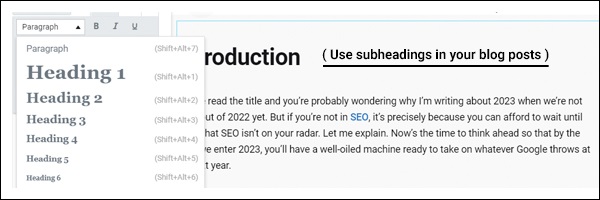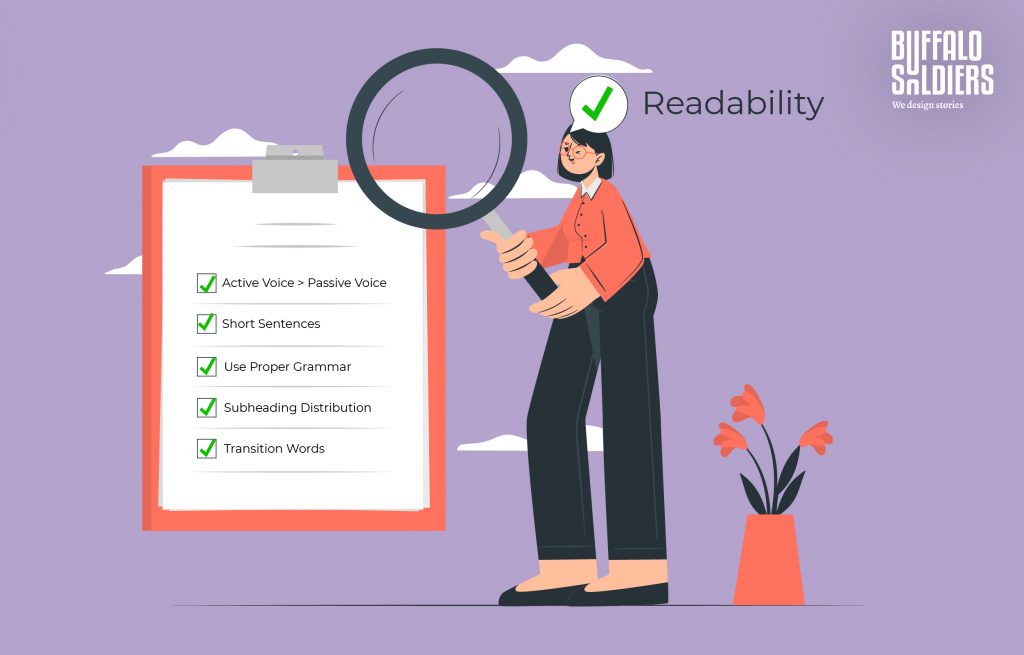Introduction
It’s easy to write a blog post. It’s easy to write something that sounds good and makes you laugh, but it’s not always so easy to write something that makes your readers react. To do that, you need to know what helps Google understand what you’re writing about and how people search for it…
1. Do proper keyword research

This is the first step in creating a blog post that’s going to be properly optimized for search engines. If you want people to find your content, then you need to know what they’re searching for. You also need to understand what search engines are looking for!
First things first: what do keywords mean? A keyword is simply a word or phrase that people type into Google or other search engines when they want information on something specific. For example, if someone searches “how do I grow tomatoes?” then their query is the keyword “how do I grow tomatoes?”. This helps us understand what they’re looking for (growing tomatoes) and how they phrase their questions (with words like “how do I…).
2. Write a title that contains your keyword
The title of your blog post is the most important element to optimize for SEO and engagement. While you can put keywords in other places, this is the only place where you’ll want to include them (other than in meta descriptions). A good way to find out what works best for you is using Google Keyword Planner or some sort of keyword research tool like SEMrush and Moz’s keyword tool. In addition, make sure that this title also makes sense and doesn’t just contain random words without any relation between them.

3. Create a meta description that entices users to click
A meta description is a snippet of text that appears below the title of a web page with search engine results. Meta descriptions can be up to 160 characters long and should entice your audience to click on your result.
To create an effective meta description, make sure it’s relevant, concise, and descriptive. If someone was searching for information about how to grow tomatoes would you want them to read your blog post or not? Would you want them on your site? That’s what SEO means by relevant – it’s about getting people who are interested in exactly what you are offering onto your website so that they can consume more content from you (and hopefully buy something else).
A good way of creating an enticing call-to-action (CTA) would be “Learn how I grew these tomatoes!” or “How did I do it?” Another way would be: “Tomatoes were my biggest headache, but now they’re not!” This CTA could also be used as an amazing summary if someone were still deciding whether or not they wanted this article enough; this type of CTA could help convince them that they need those juicy red fruits!
4. Make the first paragraph the best
While it may be tempting to start a blog post with a bang, don’t. You should make sure it’s the best paragraph of your post.
It should be relevant to the topic at hand and clear, concise, and interesting—and if that’s not enough for you, make sure it’s SEO-friendly as well.
Learn More:
- 16 Biggest SEO Trends to Look for in 2022 and 2023
- Top 5 Chrome Extensions For Digital Marketing And SEO
5. Write naturally and add keyword variations

It’s totally fine to write in a conversational tone when you’re writing blog posts, but try not to forget that SEO is a thing! When it comes to having your content rank well on search engines, you must ensure each post contains those keywords you want people searching for them (and the topics they represent) to find.
6. Don’t overdo it with the keywords

Don’t be afraid of using synonyms and variations of your primary keyword(s), but also keep in mind that if you go overboard with them, Google will likely penalize your post for being too “keyword-heavy.” For example: If I were writing an article about puppies, I might use words like cute, adorable, or fluffy throughout my body text so long as they’re used naturally within context—but I wouldn’t start throwing around phrases like “puppy puppy fluffy cute adorable” because then Google knows something funny’s going on here and this post could get penalized or even dropped altogether from its index entirely!
When it comes to writing blog posts that are engaging and fully optimized for search engines, there are several things you should avoid doing.
- Don’t use keywords that don’t make sense in the context of your blog post.
- Don’t use too many keywords that don’t make sense in the context of your blog post.
- Don’t use long strings of keywords that don’t make sense in the context of your blog post (and may be hard to read).
- Don’t do any of these things if they are not relevant or useful!
7. Use subheadings to guide readers (and search engine crawlers)

In addition to being a great way to break up your content, subheadings help search engines understand what’s important on your page. Search engines are powerful tools, but they’re not the brightest bulbs in the bunch, so they need some guidance when it comes to scanning through a large block of text and picking out the best bits.
Using subheaders can help you divide your blog post into sections that are easy for humans and bots to digest. For example:
- How To Decide What Colors Go With Each Other (And Why)
- Choosing Colors That Work For You And Your Brand
- Choosing The Right Color Palette Can Make A World Of Difference!
8. Add links to additional resources and previous blog posts

- Add links to additional resources. This can help search engines determine the topic of your blog post and also help users find more information about that topic.
- Link to previous blog posts you’ve written on the same subject as your current article or similar blog posts from other sites and sources that might be relevant to your readers. These links will also tell search engines what kind of website you are (one interested in education) because they show that there’s more content on this subject for them to find!
9. Include images that help explain your point
- You want your blog to be as beautiful as it is useful.
- Images can help break up the text, which makes for easier reading, and can make your blog post more visually appealing.
- Images can help illustrate your point by presenting it in a visual way that words cannot express. For example, if you’re writing about the importance of having an emergency fund, an image of a broken car (and maybe even some blood) might make that point more effectively than any amount of text could do on its own.
Dive Deeper: How To Start A Blog From Scratch And Become An Expert
10. Make sure your blog post is readable
A blog post is meant to be read, so make sure it’s readable.
Here are some tips for making your blog posts easy to read:
- Use short sentences and paragraphs.
- Keep the language simple.
- Use active voice (not passive).
- Try using simpler words instead of complex ones (eg, “use” instead of “utilize”). If you have any doubt about whether a word might be too long or complicated, don’t use it! Longer words aren’t necessarily better or more important than shorter ones when it comes to SEO—sometimes they can even get in the way by making something difficult for search engines to understand. sometimes
11. Make sure every post you publish is well-researched and optimized for search engines and users alike!

If you want to thrive in the online world, your blog posts need to be optimized for search engines and users alike. Here are ten tips to help you do just that:
- Title: Use keywords in your post title.
- Meta description: Use keywords in your meta description.
- First paragraph: Use keywords in your first paragraph if possible (but don’t stuff them!).
- Subheadings: Same as above, but only if they make sense and add value to the post!
- Links: Create backlinks to other relevant sites where appropriate; use related links within your text for context-sensitive searches.
- Images: Include alt tags on all images with relevant keyword phrases; include a brief caption at the bottom of each image with more detail about what it is and why it matters (if applicable).
And Therefore…
The next time you sit down to write a blog post, keep these tips in mind. If you’re diligent about making each post-SEO-friendly, your blog will start ranking higher, which means more people can discover it—and that means you get to share your ideas with a wider audience!
But, but, but. If this is eating into your Netflix time, just chill! Leave it to the experts at Buffalo Soldiers, drop in a note, and we will take care of it for you. We are a comprehensive SEO company in India and we know what we are doing.



